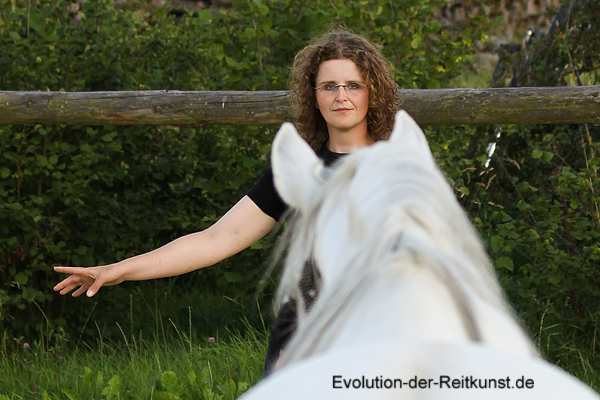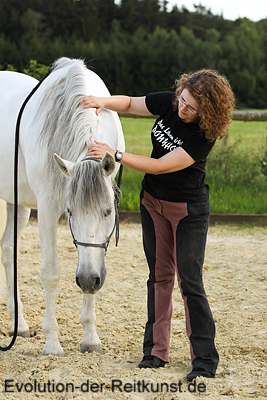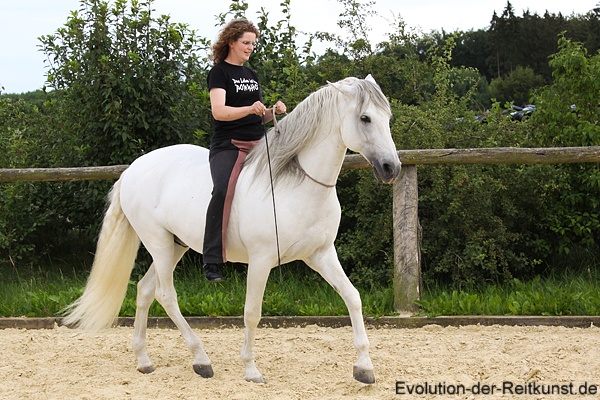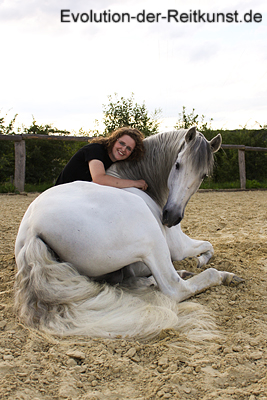
Natural Horsemanship
Natural Horsemanship in opposite to work in-hand is not mainly about training the horse's body but rather about developing and refining the communication with the horse by using body-language.
 |
|
| The horse watches the human's signals and can be directed by discreet gestures. | With a good communication human and horse move synchronically. |
The horse is supposed to trustingly react to the human's signals. To get there the human learns how he has to behave to make the horse respect him as a trustable leader.
In this connection I prefer not to use the word "dominance" since it carries a negative connotation suggesting, that the human forces the horse to subordinate.
But that is not what Natural Horsemanship is about in my opinion. My aim is a horse respectfully following the human without fearing him. For me this is very essential, because I'm convinced that a horse, which sees the human as a trustable authority, will behave a lot more dependably than a horse, which has been forced to obedience by fear and pressure.






